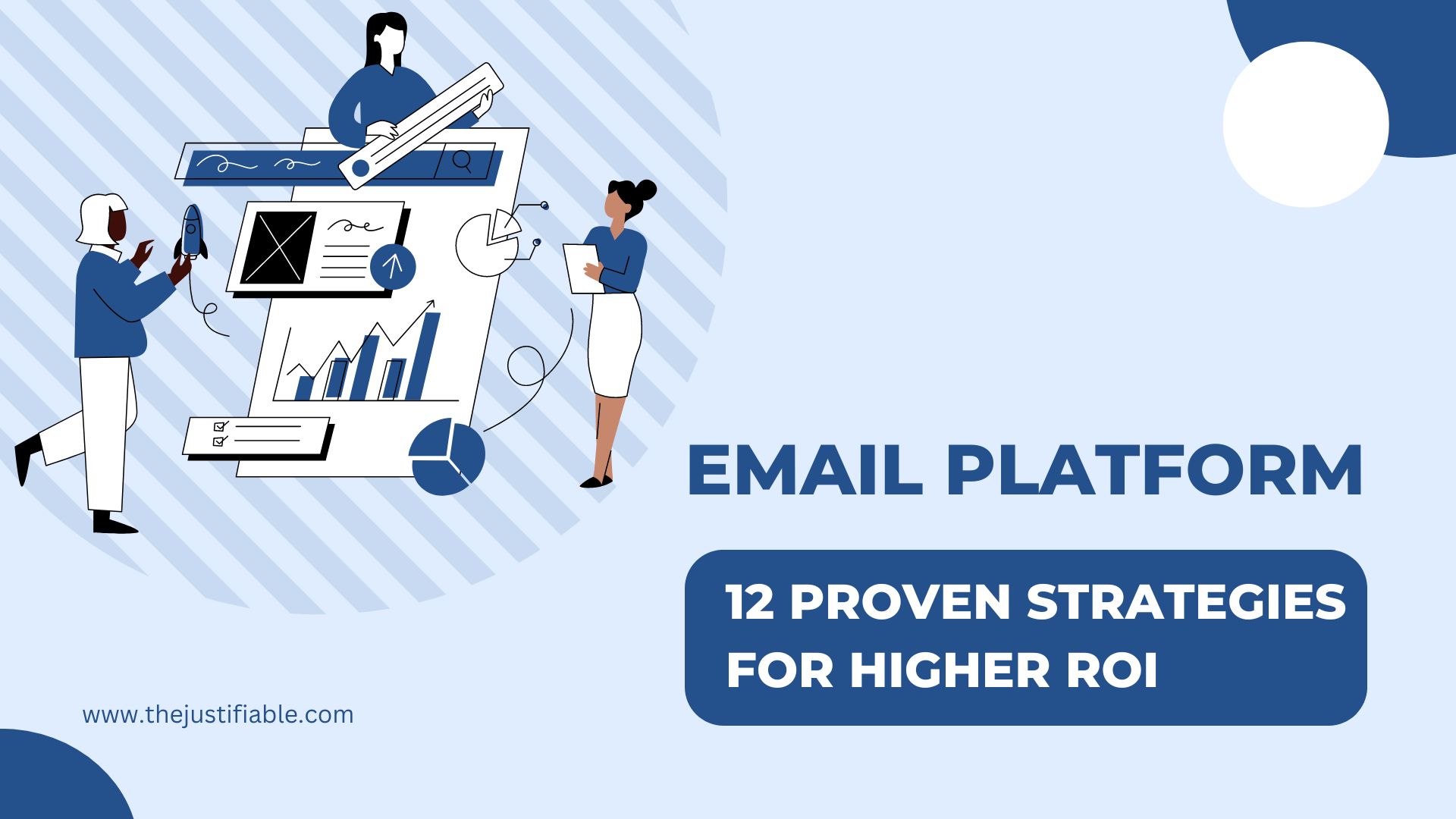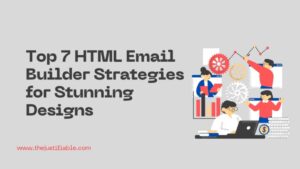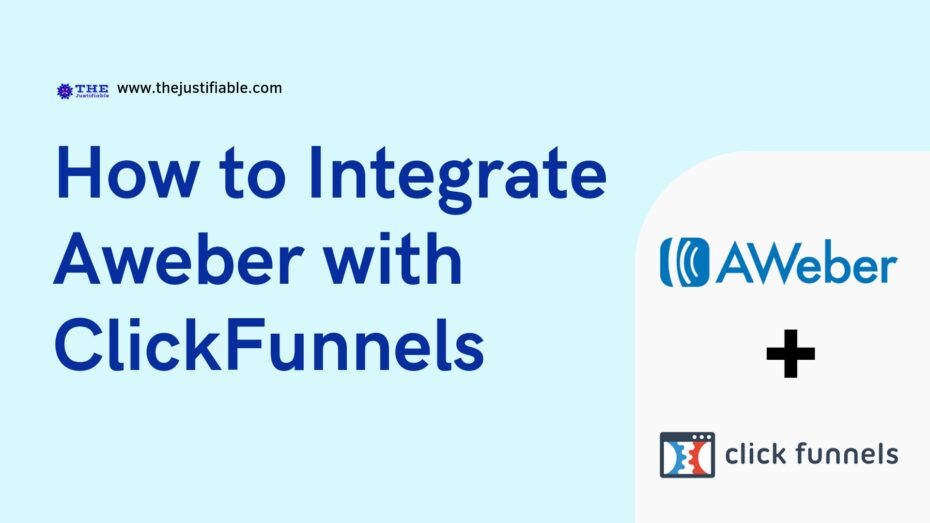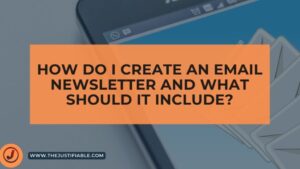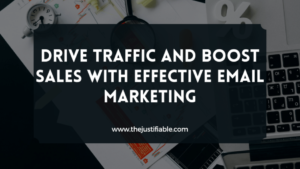Table of Contents
Email platform strategies can significantly boost your ROI, transforming your email marketing efforts into a powerhouse of engagement and conversions. By implementing these proven techniques, you can optimize your campaigns, increase open rates, and drive more revenue.
Let’s explore the top strategies to maximize your email platform’s potential.
1. Leveraging Segmentation for Targeted Campaigns
Leveraging segmentation within your email platform can significantly boost your marketing effectiveness. By dividing your audience into specific segments, you can tailor your messages to address the unique needs and preferences of each group. This targeted approach often leads to higher engagement rates and a better ROI.
Most importantly, segmentation allows you to send relevant content to your subscribers. I advise you to start by analyzing your audience’s demographics, behaviors, and purchase history. This data will help you create meaningful segments that can be addressed with personalized content, increasing the chances of conversion.
Email Marketing Recommendations
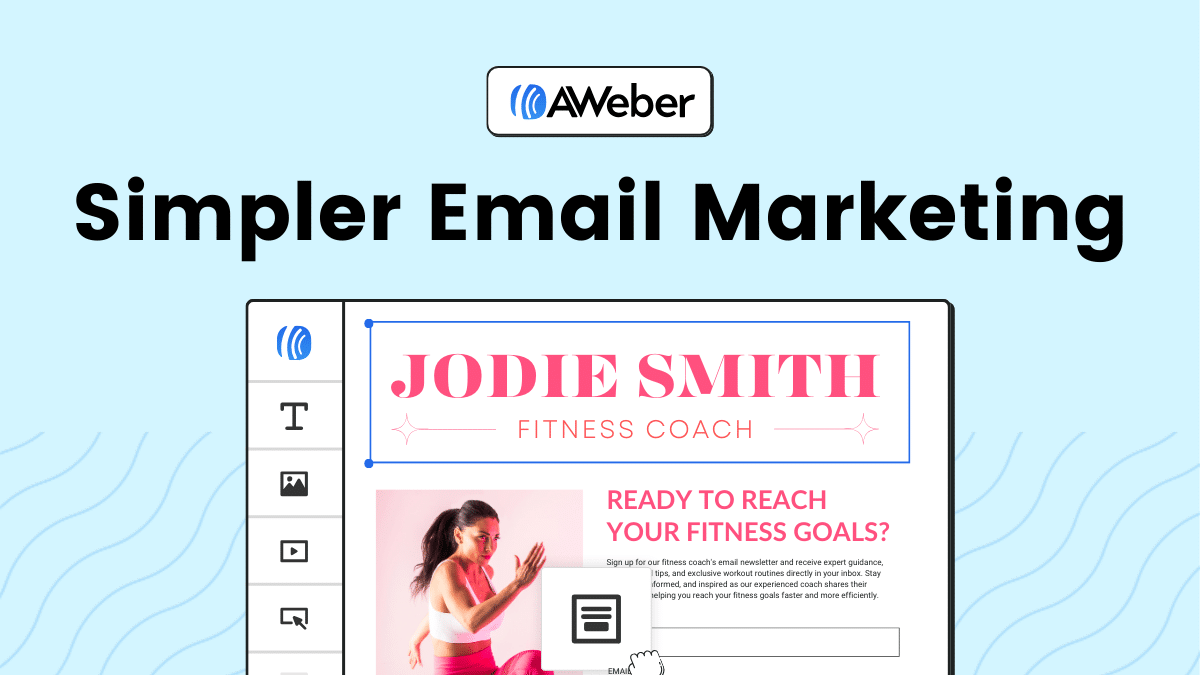 Aweber
| 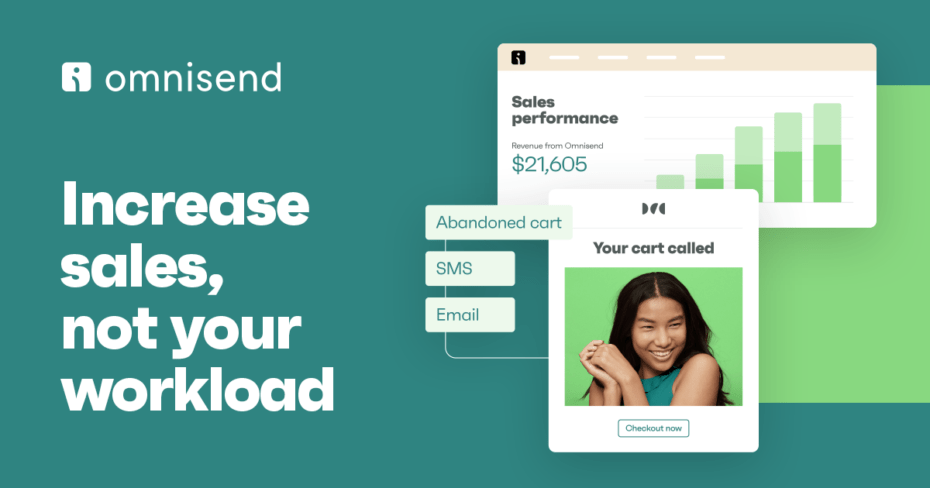 Omnisend
| 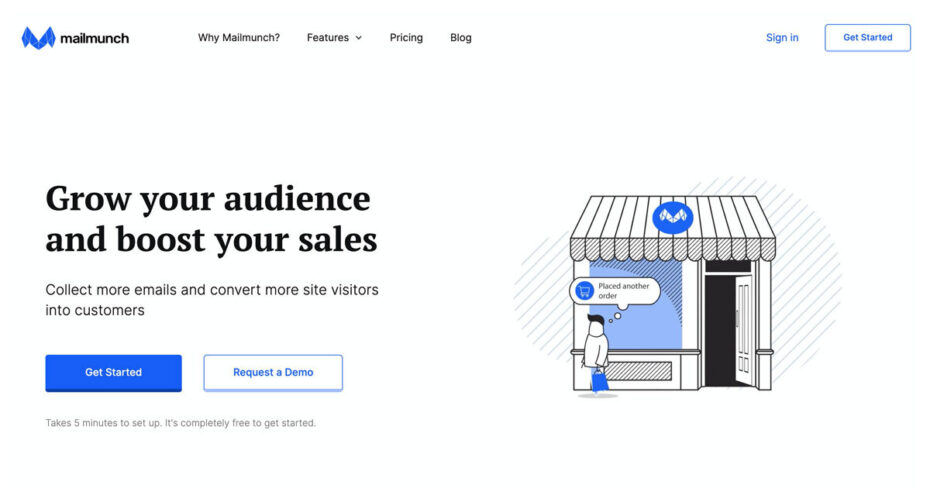 Mailmunch
|
Understanding Customer Segmentation
Customer segmentation is the process of dividing your email list into distinct groups based on shared characteristics. These characteristics can include age, gender, location, purchase history, and more.
By understanding these segments, you can create highly targeted campaigns that resonate with your audience.
I suggest starting with basic demographic segmentation. This involves grouping your subscribers by age, gender, or location. For instance, if you know that a significant portion of your audience is young adults, you can tailor your email content to address their specific interests and needs.
Additionally, segmenting by purchase history can help you target repeat buyers with exclusive offers or new product launches.
Behavioral segmentation takes this a step further by considering how your customers interact with your brand. I believe tracking behaviors such as email opens, clicks, and website visits can provide valuable insights into what your subscribers are interested in. This enables you to create more relevant and engaging email campaigns.
Implementing Behavioral Segmentation
Implementing behavioral segmentation in your email platform involves analyzing your subscribers’ actions and tailoring your campaigns accordingly. This method focuses on what your customers do rather than who they are, providing a deeper understanding of their preferences and interests.
I strongly believe tracking email engagement metrics like open rates, click-through rates, and link clicks can help you identify active and inactive subscribers. My advice is to use this data to create segments for re-engagement campaigns, targeting inactive users with compelling offers to bring them back.
Another effective strategy is to segment based on website behavior. For example, if a subscriber frequently visits your product pages but hasn’t made a purchase, I recommend sending them targeted emails with product recommendations or special discounts. This personalized approach can significantly increase the likelihood of conversion.
Additionally, I advise implementing purchase behavior segmentation. By analyzing your customers’ buying patterns, you can identify loyal customers and send them exclusive offers or early access to new products. This not only rewards their loyalty but also encourages repeat purchases.
Personalizing Content for Segments
Personalizing content for different segments within your email platform can dramatically enhance your campaign’s effectiveness. By delivering relevant content that resonates with each segment, you can foster stronger connections and drive higher engagement.
I suggest starting with personalized subject lines. Including the recipient’s name or referencing their past interactions can make your emails stand out in their inbox. For instance, if a subscriber recently viewed a product on your website, I recommend mentioning it in the subject line to pique their interest.
Moreover, dynamic content blocks allow you to tailor different parts of your email to different segments. My recommendation is to use these blocks to showcase products or offers that are most relevant to each group. For example, displaying winter clothing to subscribers in colder regions while promoting summer apparel to those in warmer areas.
Another effective tactic is to personalize your email content based on past purchase behavior. I believe recommending complementary products or providing special offers for repeat purchases can boost your sales.
Additionally, sending personalized birthday or anniversary emails with exclusive discounts can create a more personalized shopping experience, encouraging customer loyalty.
2. Crafting Compelling Subject Lines

Crafting compelling subject lines on your email platform is crucial for capturing your audience’s attention and increasing open rates. A well-crafted subject line can entice recipients to open your email, leading to higher engagement and improved ROI.
Most importantly, focusing on subject line optimization can significantly impact the success of your email campaigns.
I recommend you to start by understanding your audience and what appeals to them. Consider using a mix of curiosity, urgency, and personalization to create subject lines that stand out in crowded inboxes. My advice is to always test different approaches to see what resonates best with your subscribers.
Using Power Words and Emojis
Using power words and emojis in your subject lines can make them more engaging and eye-catching. Power words evoke strong emotions and prompt action, while emojis add a visual element that can make your email stand out. For instance, words like “exclusive,” “urgent,” and “free” can create a sense of urgency and excitement.
I suggest incorporating emojis that are relevant to your content. For example, if you are promoting a sale, use a shopping cart or a percentage emoji. However, it’s essential to use them sparingly to avoid appearing spammy. My recommendation is to A/B test different emojis to see which ones resonate best with your audience.
Moreover, balancing power words and emojis is key. I believe too many power words can overwhelm the reader, while too many emojis can make the subject line look unprofessional. Finding the right balance will help you create compelling subject lines that draw attention without going overboard.
A/B Testing Subject Lines
A/B testing your subject lines is an effective way to determine what works best for your audience. By testing different versions of a subject line, you can gather data on which one performs better, allowing you to optimize future campaigns.
My suggestion is to start by testing one variable at a time. For example, you could test the impact of using an emoji versus not using one or compare the effectiveness of different power words. I advise you to send these variations to a small segment of your email list and analyze the open rates to identify the more effective option.
Additionally, consider testing different lengths and tones. I strongly believe that what works for one audience may not work for another, so continuous testing and optimization are essential. Using the insights gained from A/B testing, you can refine your subject lines to better meet the preferences of your subscribers.
I recommend you to regularly perform A/B tests to stay ahead of changing trends and preferences. This iterative process will help you keep your email marketing efforts fresh and effective, ultimately leading to higher engagement rates.
Keeping Subject Lines Short and Sweet
Keeping your subject lines short and sweet can significantly improve your email open rates. With many users accessing emails on mobile devices, concise subject lines are more likely to be fully visible and easily readable, making them more effective in grabbing attention.
I advise aiming for subject lines that are 50 characters or fewer. This length ensures that your message is clear and compelling without getting cut off on smaller screens. For example, “Flash Sale: 50% Off All Items!” is short, to the point, and creates a sense of urgency.
Furthermore, I suggest focusing on the core message you want to convey. Avoid unnecessary words or filler content. My recommendation is to prioritize clarity and relevance to ensure your subject line directly addresses the recipient’s interests or needs.
I believe using personalization can also enhance the effectiveness of short subject lines. Including the recipient’s name or referencing a recent interaction can make your emails feel more personalized and relevant, increasing the likelihood of them being opened.
3. Optimizing Send Times for Higher Open Rates
Optimizing send times for your email platform can significantly boost your open rates and overall engagement. Understanding when your audience is most likely to check their emails allows you to schedule your campaigns for maximum impact.
Most importantly, timing your emails correctly can make a substantial difference in your campaign’s success.
I recommend starting by analyzing your audience’s behavior to determine the best times for sending emails. This data-driven approach ensures that your messages reach your subscribers when they are most receptive.
Additionally, using send time optimization tools can further refine your strategy, helping you achieve higher open rates and better results.
Analyzing Your Audience’s Behavior
Analyzing your audience’s behavior is crucial for optimizing send times on your email platform. By understanding when your subscribers are most active, you can schedule your emails to align with their habits. I suggest examining your email analytics to identify patterns in open and click rates.
For example, you might find that your audience is more engaged in the mornings or during lunch breaks. My advice is to look for trends over several campaigns to ensure you have a comprehensive understanding.
Additionally, consider segmenting your audience by time zones if you have a geographically diverse subscriber base.
I believe analyzing past campaign data is invaluable. It provides insights into your audience’s preferences and helps you make informed decisions. By continuously monitoring and adjusting based on this data, you can optimize your send times and improve your email performance.
Utilizing Send Time Optimization Tools
Utilizing send time optimization tools can greatly enhance your email platform’s effectiveness. These tools analyze your audience’s behavior and automatically determine the best times to send your emails. My recommendation is to integrate such tools into your email marketing strategy for better results.
I advise using tools that leverage machine learning to predict optimal send times based on your subscribers’ past interactions. This ensures that your emails are sent when your audience is most likely to engage.
For instance, platforms like Mailchimp and HubSpot offer built-in send time optimization features that can be extremely beneficial.
Furthermore, I suggest regularly reviewing the performance data provided by these tools. This will help you understand the effectiveness of your campaigns and make necessary adjustments. I believe combining these insights with your knowledge of your audience will lead to more successful email marketing efforts.
Testing Different Send Times
Testing different send times is essential for finding the optimal schedule for your email platform. A/B testing allows you to compare the performance of emails sent at various times to see which yields the highest open rates. I strongly believe this approach can provide valuable insights into your audience’s preferences.
I recommend starting with broad time frames, such as morning versus afternoon, and gradually narrowing down to specific hours. This iterative process helps you identify the most effective times for your audience. Additionally, consider testing on different days of the week to determine if there are any significant variations in engagement.
My suggestion is to document your findings and continuously refine your strategy based on the results. Over time, you will develop a deeper understanding of the optimal send times for your email campaigns, leading to higher engagement and better overall performance.
4. Utilizing Automated Email Sequences

Utilizing automated email sequences on your email platform can streamline your marketing efforts and ensure timely, relevant communication with your audience.
Automated sequences allow you to send targeted messages based on specific triggers, enhancing personalization and engagement. I believe this approach can significantly improve your email marketing ROI.
I suggest starting with essential automated sequences like welcome series, abandoned cart emails, and re-engagement campaigns. These sequences address key stages in the customer journey and can drive significant results.
By setting up these automated workflows, you can focus on other aspects of your marketing strategy while maintaining consistent communication with your subscribers.
Setting Up Welcome Series
Setting up a welcome series on your email platform is crucial for making a positive first impression with new subscribers. A well-crafted welcome series can introduce your brand, highlight your value proposition, and encourage initial engagement. I recommend creating a sequence of 3-5 emails to gradually onboard new subscribers.
The first email should be sent immediately after signup, thanking the subscriber and providing a brief overview of what they can expect from your emails. Subsequent emails can include information about your products or services, customer testimonials, and exclusive offers.
My advice is to keep the tone friendly and informative to build a strong foundation for future interactions.
I suggest using personalization in your welcome series to make new subscribers feel valued. Address them by name and tailor the content based on their interests or preferences. This personalized approach can enhance engagement and set the stage for a successful email relationship.
Creating Abandoned Cart Emails
Creating abandoned cart emails on your email platform can recover lost sales and increase revenue. These emails are triggered when a customer adds items to their cart but does not complete the purchase. I strongly believe timely and compelling abandoned cart emails can persuade customers to return and finalize their purchase.
I recommend sending the first reminder email within a few hours of the abandonment, highlighting the items left in the cart and including a clear call-to-action to complete the purchase. A follow-up email can be sent a day later, offering an incentive such as a discount or free shipping to entice the customer to return.
Additionally, I advise including customer reviews or testimonials in your abandoned cart emails to reinforce the value of your products. By addressing potential concerns and providing social proof, you can increase the likelihood of converting abandoned carts into completed sales.
Designing Re-engagement Campaigns
Designing re-engagement campaigns on your email platform can help revive inactive subscribers and improve overall engagement. Re-engagement emails are sent to subscribers who have not interacted with your emails for a certain period. I suggest creating a compelling re-engagement sequence to win back these subscribers.
Start with a friendly reminder, acknowledging their inactivity and expressing a desire to continue the relationship. I recommend offering a special incentive, such as a discount or exclusive content, to encourage them to re-engage. Follow up with emails highlighting the value they can gain from staying subscribed.
My advice is to segment inactive subscribers and tailor your re-engagement campaigns based on their past behavior and preferences. Personalization can make these emails more relevant and increase the chances of rekindling their interest in your brand.
If some subscribers remain unresponsive, consider a final email asking if they still wish to receive your emails, giving them an option to unsubscribe gracefully.
5. Integrating Dynamic Content for Personalization
Integrating dynamic content for personalization on your email platform can significantly enhance user engagement and conversion rates. By leveraging subscriber data to deliver tailored content, you create a more relevant and enjoyable experience for your audience.
Most importantly, personalized emails show your subscribers that you understand their preferences and needs.
I recommend starting by collecting and analyzing subscriber data to understand their behavior and preferences. This data forms the foundation for creating dynamic content that resonates with your audience.
Additionally, implementing dynamic content blocks allows you to customize different sections of your email, providing a highly personalized experience for each subscriber.
Using Subscriber Data to Personalize Content
Using subscriber data to personalize content on your email platform can drastically improve your email marketing results. By tailoring your messages based on user behavior and preferences, you can make your emails more relevant and engaging.
I believe this approach not only increases open rates but also boosts click-through rates and conversions.
My advice is to start by collecting data such as purchase history, browsing behavior, and demographic information. This data will help you segment your audience and deliver personalized content that meets their specific needs.
For example, if a subscriber frequently browses a particular product category, I suggest highlighting related products or special offers in your emails.
Additionally, I recommend using real-time data to personalize your emails. This could include dynamically updating content based on the subscriber’s latest interactions with your website or app. By delivering timely and relevant content, you can enhance the subscriber experience and increase engagement.
Implementing Dynamic Content Blocks
Implementing dynamic content blocks on your email platform allows you to create highly personalized emails that adapt to each subscriber’s preferences. Dynamic content blocks can display different images, text, or offers based on the subscriber’s data, making your emails more engaging and effective.
I suggest starting with basic dynamic content blocks, such as personalized greetings or product recommendations based on past purchases. As you become more comfortable with this feature, you can expand to more complex use cases, such as location-based offers or personalized content based on browsing behavior.
My recommendation is to test different dynamic content blocks to see which ones resonate most with your audience. By continuously refining your approach, you can create highly effective personalized emails that drive engagement and conversions.
Furthermore, I believe integrating dynamic content blocks with your overall email strategy is essential. This ensures that your emails remain relevant and valuable to your subscribers, helping to build long-term relationships and brand loyalty.
Measuring the Impact of Personalization
Measuring the impact of personalization on your email platform is crucial for understanding its effectiveness and making data-driven improvements. By analyzing key metrics, you can determine how well your personalized emails are performing and identify areas for optimization.
I advise tracking metrics such as open rates, click-through rates, and conversion rates to gauge the success of your personalized emails. Comparing these metrics against your non-personalized emails can provide valuable insights into the effectiveness of your personalization efforts.
Additionally, I recommend conducting A/B tests to compare different personalization strategies. This will help you understand which approaches work best for your audience and refine your tactics accordingly.
By continuously monitoring and optimizing your personalization efforts, you can maximize their impact on your email marketing performance.
My suggestion is to also gather qualitative feedback from your subscribers. This can include surveys or direct feedback on your emails, providing additional insights into how your personalization efforts are perceived and where improvements can be made.
6. Enhancing Deliverability Rates

Enhancing deliverability rates on your email platform is essential for ensuring your emails reach your subscribers’ inboxes. High deliverability rates lead to better engagement and a stronger email marketing performance.
I strongly believe that maintaining a clean email list and authenticating your emails are key strategies for achieving high deliverability.
I recommend regularly monitoring your deliverability metrics to identify any issues and take corrective actions. This proactive approach helps maintain the health of your email list and ensures your messages reach your intended audience.
Maintaining a Clean Email List
Maintaining a clean email list is crucial for enhancing deliverability rates on your email platform. A clean list reduces the chances of your emails being marked as spam and improves your sender reputation. My advice is to regularly remove inactive or invalid email addresses from your list.
I suggest using email verification tools to identify and remove invalid addresses. Additionally, implementing a re-engagement campaign can help you determine which subscribers are no longer interested in your emails.
If they don’t respond to your re-engagement efforts, I recommend removing them from your list to maintain its quality.
Furthermore, I believe segmenting your email list based on engagement levels can help you send more relevant emails. This not only improves your deliverability rates but also increases overall engagement with your emails.
Authenticating Your Emails
Authenticating your emails is a critical step in enhancing deliverability rates on your email platform. Email authentication protocols, such as SPF, DKIM, and DMARC, verify that your emails are coming from a legitimate source. I recommend setting up these protocols to protect your emails from being marked as spam.
SPF (Sender Policy Framework) allows you to specify which IP addresses are authorized to send emails on behalf of your domain. DKIM (DomainKeys Identified Mail) adds a digital signature to your emails, ensuring their integrity.
DMARC (Domain-based Message Authentication, Reporting & Conformance) provides guidelines for handling unauthenticated emails.
My advice is to work with your email service provider to set up these authentication protocols. This will help improve your sender reputation and increase the chances of your emails being delivered to your subscribers’ inboxes.
Monitoring Deliverability Metrics
Monitoring deliverability metrics is essential for understanding the performance of your email platform and identifying areas for improvement. Key metrics to track include bounce rates, spam complaints, and open rates. I believe that regularly reviewing these metrics can help you maintain high deliverability rates.
I suggest setting up alerts for any significant changes in your deliverability metrics. This will enable you to quickly address any issues that arise, such as an increase in bounce rates or spam complaints.
Additionally, conducting regular audits of your email list and sending practices can help identify potential problems before they impact your deliverability.
My recommendation is to use deliverability monitoring tools provided by your email service provider. These tools offer valuable insights into your email performance and help you make data-driven decisions to enhance your email marketing strategy.
7. Crafting High-Quality Email Content
Crafting high-quality email content on your email platform is crucial for engaging your audience and driving conversions. Quality content can captivate your readers, encouraging them to take action and interact with your brand.
I recommend focusing on writing engaging copy, incorporating visual elements, and including clear call-to-actions to enhance the effectiveness of your emails.
I believe that the key to high-quality email content lies in its ability to resonate with your audience. This involves understanding their needs, preferences, and pain points. My advice is to create content that is relevant, informative, and valuable to your subscribers, ensuring that each email you send has a clear purpose and provides genuine value.
Writing Engaging Copy
Writing engaging copy is essential for capturing your audience’s attention and keeping them interested in your emails. I suggest using a conversational tone that reflects your brand’s personality and connects with your subscribers on a personal level. Start with a compelling subject line that piques curiosity and encourages the reader to open the email.
I advise you to focus on the benefits of your product or service rather than just listing features. This approach helps your subscribers understand how your offerings can solve their problems or improve their lives. Additionally, using storytelling techniques can make your copy more relatable and memorable.
My recommendation is to keep your copy concise and to the point. Long, wordy emails can overwhelm your readers and lead to disengagement. I believe using bullet points and short paragraphs can make your content more digestible and easier to scan, ensuring that your key messages stand out.
Furthermore, incorporating personalization in your copy can significantly enhance engagement. Address your subscribers by name and reference their past interactions with your brand. This personalized touch can make your emails feel more relevant and tailored to their individual needs.
Including Visual Elements
Including visual elements in your email content can make it more appealing and engaging. Visuals such as images, videos, and infographics can break up text, making your emails easier to read and more visually appealing. I suggest using high-quality visuals that are relevant to your content and enhance your message.
I recommend incorporating product images, customer testimonials, and behind-the-scenes photos to create a more immersive experience for your subscribers. Videos can also be a powerful tool for demonstrating your products or sharing customer stories. My advice is to keep your visuals consistent with your brand’s style and tone.
Additionally, I believe that using visuals strategically can help guide your readers’ attention to key points and call-to-actions. For example, using arrows or highlighted sections can draw attention to important information or links, making it easier for your subscribers to take the desired action.
My suggestion is to always include alt text for your images. This not only improves accessibility for visually impaired subscribers but also ensures that your message gets across even if the images don’t load properly. Alt text can also contribute to better SEO, helping your emails rank higher in search results.
Adding Clear Call-to-Actions
Adding clear call-to-actions (CTAs) is crucial for driving conversions and guiding your subscribers towards the desired action. CTAs should be prominently displayed and easy to understand, prompting your readers to take the next step. I strongly believe that a well-crafted CTA can significantly impact the effectiveness of your email campaigns.
I suggest using action-oriented language that clearly communicates what you want your subscribers to do. Phrases like “Shop Now,” “Learn More,” and “Sign Up” are effective in encouraging immediate action. My advice is to make your CTAs stand out by using contrasting colors and bold fonts.
I recommend placing your primary CTA above the fold, ensuring that it is visible without the need for scrolling. Additionally, including multiple CTAs throughout your email can increase the chances of conversion, especially for longer emails. However, I believe it’s important to maintain a balance and avoid overwhelming your readers with too many CTAs.
My advice is to test different CTA placements, colors, and wording to determine what works best for your audience. A/B testing can provide valuable insights into the most effective CTAs for driving engagement and conversions. By continuously refining your approach, you can optimize your CTAs for maximum impact.
8. Implementing Mobile-Friendly Designs

Implementing mobile-friendly designs on your email platform is essential for ensuring that your emails are accessible and visually appealing on all devices. With a significant portion of users accessing emails on their mobile devices, optimizing your design for mobile viewing can enhance user experience and engagement.
I recommend using responsive design techniques, testing emails on multiple devices, and optimizing for mobile viewing to achieve the best results.
I believe that a mobile-first approach is key to creating effective email designs. This involves designing your emails with mobile users in mind, ensuring that they load quickly and display correctly on smaller screens. My advice is to prioritize simplicity and clarity, making it easy for your subscribers to read and interact with your emails on their mobile devices.
Using Responsive Design Techniques
Using responsive design techniques is crucial for creating emails that look great on any device. Responsive design ensures that your email layout adapts to different screen sizes, providing an optimal viewing experience for your subscribers. I suggest using flexible grids, scalable images, and media queries to achieve a responsive design.
I recommend starting with a single-column layout for your emails, as this is more adaptable to different screen sizes. Additionally, using larger fonts and buttons can make your emails more readable and easier to interact with on mobile devices.
My advice is to keep your design simple and avoid clutter, ensuring that your key messages and CTAs stand out.
I believe testing your responsive design across various devices and email clients is essential to ensure a consistent user experience. This allows you to identify any issues and make necessary adjustments before sending your emails.
By implementing responsive design techniques, you can enhance the accessibility and effectiveness of your email campaigns.
Testing Emails on Multiple Devices
Testing emails on multiple devices is an important step in ensuring that your email content displays correctly and functions properly for all users. Different devices and email clients can render emails differently, so thorough testing helps you identify and fix any issues.
I advise using email testing tools that simulate how your emails will appear on various devices.
I recommend testing your emails on popular devices, including smartphones, tablets, and desktop computers. Pay attention to how your layout, images, and CTAs appear on each device. My advice is to ensure that your text is legible, images load correctly, and buttons are easy to click on mobile devices.
I believe testing should also include checking your emails in different email clients, such as Gmail, Outlook, and Apple Mail. This helps you identify any rendering issues specific to certain clients.
By conducting comprehensive testing, you can ensure a consistent and positive experience for all your subscribers.
My suggestion is to also test your emails in both light and dark mode settings. Many users prefer dark mode, and testing ensures that your emails remain visually appealing and readable in this setting. By covering all bases, you can optimize your email design for the best possible user experience.
Optimizing for Mobile Viewing
Optimizing your emails for mobile viewing is essential for enhancing user experience and engagement. With more people accessing emails on their mobile devices, it’s important to ensure that your emails are easy to read and interact with on smaller screens.
I strongly believe that mobile optimization can significantly impact the success of your email campaigns.
I recommend using a mobile-first approach, designing your emails with mobile users in mind from the start. This includes using larger fonts, clear CTAs, and a single-column layout that adapts well to different screen sizes. My advice is to keep your content concise and prioritize the most important information to ensure it gets across effectively on mobile devices.
Additionally, I suggest optimizing your images for faster loading times on mobile networks. Compressing your images without sacrificing quality can help reduce loading times and improve the overall user experience.
I believe including alt text for images is also important, as it ensures that your message is conveyed even if images don’t load.
My advice is to regularly review your email analytics to understand how your mobile users are interacting with your emails. This can provide valuable insights into areas for improvement and help you refine your mobile optimization strategy.
By focusing on mobile optimization, you can enhance engagement and drive better results from your email campaigns.
9. Monitoring and Analyzing Email Metrics
Monitoring and analyzing email metrics on your email platform is crucial for understanding the effectiveness of your campaigns. By tracking key metrics, you can gain insights into your audience’s behavior and make data-driven decisions to improve your email marketing strategy.
Most importantly, regular analysis helps you identify areas of improvement and optimize your efforts for better results.
I recommend focusing on essential metrics such as open rates, click rates, and conversion rates to gauge your campaign’s performance. By continuously monitoring these metrics, you can adjust your strategy to better meet your audience’s needs and preferences.
This proactive approach ensures that your email campaigns remain effective and engaging.
Tracking Open and Click Rates
Tracking open and click rates is vital for evaluating the initial engagement of your email campaigns. Open rates indicate how many recipients opened your email, while click rates show the percentage of recipients who clicked on links within your email.
I believe these metrics provide a clear picture of how compelling your subject lines and content are.
My advice is to use these metrics to identify trends and patterns in your audience’s behavior. For instance, if you notice a drop in open rates, it might be time to experiment with different subject lines or send times.
Similarly, low click rates may indicate that your content or call-to-actions need improvement.
I suggest segmenting your email list and analyzing open and click rates for different segments. This approach can help you understand which groups are more engaged and tailor your content accordingly.
By focusing on these key metrics, you can enhance the overall performance of your email campaigns.
Additionally, I recommend setting benchmarks for your open and click rates based on industry standards and past performance. This will help you measure your progress and set realistic goals for future campaigns.
Regularly reviewing and analyzing these metrics will enable you to make informed decisions and continuously improve your email marketing strategy.
Analyzing Conversion Rates
Analyzing conversion rates is crucial for understanding how well your email campaigns are driving desired actions, such as making a purchase or signing up for a webinar.
Conversion rates provide insights into the effectiveness of your call-to-actions and overall campaign strategy. I believe focusing on this metric helps you assess the true impact of your emails on your business goals.
I suggest tracking the number of conversions relative to the number of emails delivered, opened, and clicked. This comprehensive analysis helps you identify where in the funnel you might be losing potential customers.
If your open and click rates are high, but conversion rates are low, it may indicate a disconnect between your email content and landing pages.
My advice is to conduct A/B testing to optimize your emails for conversions. Experiment with different elements such as subject lines, content, CTAs, and landing page designs. This iterative process allows you to determine what resonates best with your audience and drives higher conversion rates.
Furthermore, I recommend analyzing conversion rates for different segments of your email list. This targeted approach helps you understand which groups are more likely to convert and tailor your campaigns to maximize their impact.
By continuously monitoring and optimizing your conversion rates, you can improve the effectiveness of your email marketing efforts.
Using Metrics to Improve Future Campaigns
Using email metrics to improve future campaigns is essential for achieving long-term success on your email platform. By analyzing your campaign performance, you can identify strengths and weaknesses and make data-driven decisions to enhance your strategy.
I believe that a systematic approach to analyzing metrics can significantly improve your email marketing outcomes.
I recommend setting specific, measurable goals for each campaign and tracking relevant metrics to assess your progress. For example, if your goal is to increase webinar sign-ups, focus on tracking open rates, click rates, and conversion rates related to your webinar promotions.
This targeted approach helps you understand what works and what needs improvement.
My advice is to use the insights gained from your analysis to refine your email content, design, and timing. Experiment with different strategies and track the results to see what resonates best with your audience.
By continuously testing and optimizing your campaigns, you can improve your overall email marketing performance.
Additionally, I suggest sharing your findings with your team and using them to inform your broader marketing strategy. Collaborating on insights and best practices can lead to more cohesive and effective campaigns across all channels.
By leveraging email metrics to drive continuous improvement, you can achieve better results and maximize the impact of your email marketing efforts.
10. Testing and Refining Email Campaigns
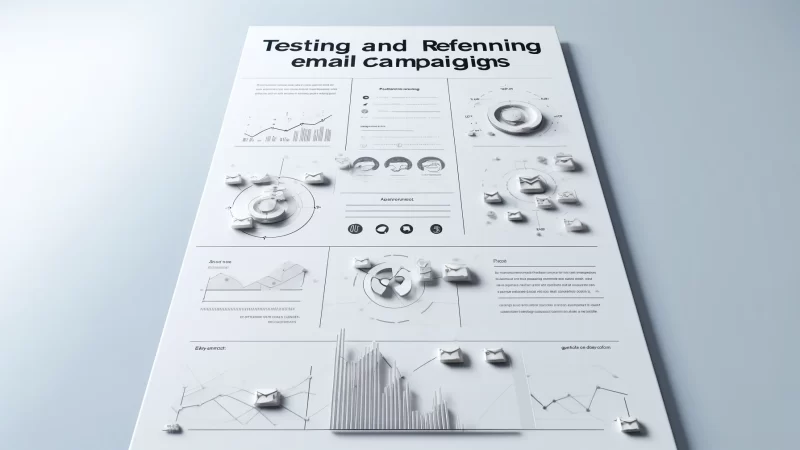
Testing and refining email campaigns on your email platform is vital for optimizing your marketing efforts and achieving better results. By conducting regular tests and analyzing the outcomes, you can identify what works best for your audience and continuously improve your strategy.
I recommend using A/B testing, analyzing test results, and continuously refining your campaigns to enhance their effectiveness.
I believe that a structured approach to testing and refinement can lead to significant improvements in your email marketing performance. My advice is to start with small, manageable tests and gradually expand your efforts as you gain insights and confidence in your strategy.
Conducting A/B Testing
Conducting A/B testing is an effective way to determine what elements of your email campaigns resonate most with your audience. A/B testing involves sending two variations of an email to different segments of your audience and comparing the results. I strongly believe that A/B testing can provide valuable insights into your audience’s preferences and behaviors.
I suggest starting with simple tests, such as subject lines or call-to-action buttons, to see which version performs better. As you become more comfortable with A/B testing, you can experiment with more complex elements, such as email layout, images, and content. My advice is to test one variable at a time to isolate its impact on your results.
Additionally, I recommend using the insights gained from A/B testing to inform your future campaigns. By continuously testing and optimizing your emails, you can refine your strategy and achieve better results over time. A/B testing is a powerful tool for improving your email marketing performance and maximizing the impact of your campaigns.
Analyzing Test Results
Analyzing test results is crucial for understanding the effectiveness of your A/B testing efforts and making data-driven decisions. By examining the outcomes of your tests, you can identify what works best for your audience and refine your email campaigns accordingly. I believe that thorough analysis of test results is essential for achieving continuous improvement.
I recommend comparing key metrics, such as open rates, click rates, and conversion rates, for the different versions of your tested emails. This analysis helps you determine which elements are most effective in driving engagement and conversions.
My advice is to look for patterns and trends in your test results to gain deeper insights into your audience’s preferences.
Additionally, I suggest documenting your test results and sharing them with your team. This collaborative approach can help you build a knowledge base of best practices and inform your broader marketing strategy. By leveraging the insights gained from your tests, you can continuously improve your email campaigns and achieve better results.
My recommendation is to use the insights gained from your analysis to set benchmarks and goals for future campaigns. This data-driven approach ensures that your email marketing efforts are always aligned with your audience’s needs and preferences, leading to more effective and impactful campaigns.
Continuously Improving Campaigns
Continuously improving your email campaigns is essential for maintaining their effectiveness and achieving long-term success on your email platform. By regularly testing, analyzing, and refining your strategy, you can ensure that your emails remain relevant and engaging for your audience.
I strongly believe that a commitment to continuous improvement is key to maximizing the impact of your email marketing efforts.
I suggest setting up a regular schedule for testing and analysis to keep your campaigns fresh and effective. This could include monthly A/B tests, quarterly performance reviews, and annual strategy updates. My advice is to stay informed about industry trends and best practices to ensure that your email marketing strategy remains current and competitive.
Furthermore, I recommend using the insights gained from your testing and analysis to inform your broader marketing strategy. By integrating your email marketing efforts with other channels, such as social media and content marketing, you can create a more cohesive and effective overall strategy.
I believe that a holistic approach to marketing can lead to better results and a stronger brand presence.
My advice is to always keep your audience’s needs and preferences at the forefront of your strategy. By continuously improving your email campaigns based on data and feedback, you can ensure that your emails remain relevant, engaging, and effective in driving your desired outcomes.
11. Leveraging Social Proof in Emails
Leveraging social proof in your email platform is a powerful way to build trust and credibility with your audience. By showcasing positive experiences from other customers, you can influence potential buyers and boost conversion rates.
Most importantly, social proof provides authentic validation of your products or services, making your emails more persuasive and engaging.
I recommend incorporating various forms of social proof, such as customer testimonials, user-generated content, and reviews and ratings, into your email campaigns. These elements help to create a sense of community and reliability around your brand.
My advice is to strategically place social proof throughout your emails to maximize its impact and encourage your subscribers to take action.
Including Customer Testimonials
Including customer testimonials in your emails can significantly enhance your credibility and persuade potential customers to make a purchase. Testimonials provide real-life examples of how your products or services have benefited others, making your email content more relatable and convincing.
I suggest featuring testimonials from satisfied customers who represent your target audience.
I recommend using testimonials that highlight specific benefits and results. For example, a testimonial that mentions how your product solved a particular problem or improved the customer’s life can be very impactful.
My advice is to include the customer’s name, photo, and any relevant details to add authenticity to the testimonial.
Furthermore, I believe that rotating testimonials in your email campaigns can keep your content fresh and engaging. This approach ensures that different aspects of your product or service are highlighted, appealing to a broader range of potential customers.
Including a variety of testimonials can also address different pain points and objections, increasing the likelihood of conversion.
My suggestion is to collect testimonials regularly and update your email content accordingly. Encouraging satisfied customers to share their experiences can provide you with a steady stream of fresh, authentic content to include in your emails. This ongoing effort helps to maintain the relevance and effectiveness of your email campaigns.
Showcasing User-Generated Content
Showcasing user-generated content (UGC) in your emails can create a strong sense of community and trust around your brand. UGC includes any content created by your customers, such as photos, videos, and social media posts, that features your products or services.
I strongly believe that UGC is highly effective because it provides authentic, peer-to-peer endorsements.
I advise encouraging your customers to share their experiences with your products on social media using a specific hashtag. You can then curate the best content and feature it in your emails.
This not only provides social proof but also engages your community and fosters brand loyalty.
My recommendation is to highlight different types of UGC, such as photos of customers using your products, unboxing videos, or before-and-after shots. This variety keeps your email content interesting and showcases your products in real-life situations.
Including captions or quotes from the original posts can add a personal touch and make the content more relatable.
Additionally, I suggest running campaigns or contests that incentivize customers to create and share UGC. For example, offering a discount or prize for the best photo or video can motivate more customers to participate.
This strategy can generate a wealth of authentic content for your emails and strengthen your brand’s community.
Highlighting Reviews and Ratings
Highlighting reviews and ratings in your emails is another effective way to leverage social proof on your email platform. Reviews and ratings provide unbiased opinions from other customers, which can significantly influence potential buyers. I recommend featuring high ratings and positive reviews prominently in your email content.
I suggest including a summary of your average rating and the total number of reviews to quickly convey the overall customer satisfaction. This can be particularly impactful for new subscribers who are not yet familiar with your brand.
My advice is to use visually appealing formats, such as star ratings or highlighted quotes, to draw attention to the reviews.
Moreover, I believe that featuring reviews that address common questions or concerns can help alleviate any doubts potential customers may have. For example, if customers often ask about the durability of your product, including a review that praises its longevity can be very reassuring.
This targeted approach ensures that your reviews are not only positive but also relevant and informative.
My recommendation is to regularly update the reviews and ratings featured in your emails to keep the content fresh and reflective of recent customer experiences. This ongoing effort helps maintain trust and credibility with your audience, making your emails more effective in driving conversions.
12. Utilizing Email Analytics Tools
Utilizing email analytics tools on your email platform is essential for optimizing your email marketing strategy and achieving better results. These tools provide valuable insights into your campaign performance, allowing you to make data-driven decisions and improve your email content.
I strongly believe that leveraging email analytics can significantly enhance your overall marketing efforts.
I recommend choosing the right analytics tools that suit your specific needs and setting up tracking for your campaigns to gather accurate data.
My advice is to interpret the data carefully to gain actionable insights and continuously refine your email strategy. This approach ensures that your emails remain effective and aligned with your marketing goals.
Choosing the Right Analytics Tools
Choosing the right analytics tools for your email platform is crucial for gaining accurate insights into your campaign performance. Different tools offer various features, so it’s important to select one that aligns with your needs and goals. I suggest considering factors such as ease of use, integration capabilities, and the range of metrics provided.
I recommend looking for tools that offer comprehensive reporting on key metrics like open rates, click rates, conversion rates, and bounce rates. Some popular email analytics tools include Google Analytics, Mailchimp, and HubSpot.
My advice is to evaluate the features of each tool and choose one that provides the most relevant and actionable data for your campaigns.
Moreover, I believe that integrating your email analytics tool with your CRM system can provide a more holistic view of your customer interactions and campaign performance. This integration allows you to track the entire customer journey and make more informed decisions.
My recommendation is to ensure that the tool you choose offers seamless integration with your existing systems.
I suggest taking advantage of any trial periods or demos offered by analytics tools to test their functionality and suitability for your needs. This hands-on experience can help you make a more informed decision and select the best tool for optimizing your email marketing efforts.
Setting Up Tracking for Campaigns
Setting up tracking for your email campaigns is essential for collecting accurate data and measuring your performance. Proper tracking allows you to monitor key metrics and understand how your audience interacts with your emails.
I recommend using tracking pixels and UTM parameters to gather detailed insights into your campaign’s effectiveness.
I advise embedding tracking pixels in your emails to monitor open rates. These small, invisible images load when a recipient opens the email, providing you with data on how many recipients opened your email and when.
My suggestion is to use this data to identify trends and optimize your send times and subject lines.
Additionally, I recommend using UTM parameters to track the performance of links within your emails. UTM parameters are tags added to your URLs that allow you to see how much traffic and conversions are generated by specific links.
This data can help you understand which content and CTAs are most effective in driving engagement.
My advice is to regularly review and analyze your tracking data to identify areas for improvement. By continuously monitoring your campaign performance, you can make data-driven adjustments to enhance your email marketing strategy and achieve better results.
Interpreting Data for Better Insights
Interpreting data from your email analytics tools is crucial for gaining actionable insights and improving your email marketing strategy. By analyzing key metrics, you can understand your audience’s behavior and preferences, allowing you to make informed decisions.
I strongly believe that data-driven insights can significantly enhance the effectiveness of your email campaigns.
I suggest starting with a thorough analysis of your open rates, click rates, and conversion rates. These metrics provide a clear picture of how well your emails are performing and where there may be room for improvement.
For example, low open rates might indicate that your subject lines need more attention, while low click rates could suggest that your content or CTAs need optimization.
Additionally, I recommend segmenting your data to gain deeper insights into specific audience groups. This approach allows you to tailor your emails to different segments, improving their relevance and effectiveness.
My advice is to look for patterns and trends within each segment to identify opportunities for personalization and engagement.
Furthermore, I believe that conducting regular performance reviews and comparing your data against industry benchmarks can help you set realistic goals and measure your progress. This ongoing analysis ensures that your email marketing strategy remains aligned with your business objectives and adapts to changing trends and audience preferences.
My recommendation is to use the insights gained from your data analysis to continuously refine and optimize your email campaigns. By leveraging data-driven decisions, you can enhance your email marketing efforts and achieve better results for your business.
Frequently Asked Questions (FAQ)
What is an email platform?
An email platform is a software or service that allows businesses to manage and execute email marketing campaigns. It provides tools for creating, sending, and tracking emails, segmenting audiences, automating workflows, and analyzing campaign performance. Popular platforms include Mailmunch, AWeber, and ConvertKit.
Why should I use an email platform for my business?
Using an email platform helps streamline your email marketing efforts by providing automation, segmentation, and detailed analytics. This leads to higher engagement rates, improved customer relationships, and increased ROI. Platforms offer templates and tools to create professional-looking emails without needing advanced technical skills.
How do I choose the best email platform for my needs?
When choosing an email platform, consider factors like ease of use, pricing, available features, customer support, and integration capabilities with other tools you use. Start with a list of your business requirements, then compare platforms like Constant Contact, GetResponse, and ActiveCampaign to find the best fit.
What features should I look for in an email platform?
Key features to look for include automation, segmentation, A/B testing, analytics, responsive templates, and integration with other marketing tools. Advanced features might include AI-powered recommendations, advanced personalization, and multi-channel marketing capabilities.
How can I improve my email deliverability rates?
Improving email deliverability involves maintaining a clean email list, authenticating your emails with SPF, DKIM, and DMARC, and avoiding spammy content. Regularly monitor bounce rates, open rates, and engagement metrics to identify and address any issues.
What is email segmentation, and why is it important?
Email segmentation is the practice of dividing your email list into smaller groups based on specific criteria like demographics, behavior, or purchase history. Segmentation allows for more targeted and relevant email campaigns, leading to higher open rates and better engagement.
How do I create compelling email subject lines?
Crafting compelling email subject lines involves keeping them short, using power words, and personalizing them with the recipient’s name or interests. A/B testing different subject lines can help identify which ones resonate best with your audience.
What are automated email sequences?
Automated email sequences are pre-written emails sent automatically based on specific triggers, such as a new subscriber joining your list or a customer abandoning their cart. These sequences help nurture leads, onboard new customers, and re-engage inactive subscribers.
How can I measure the success of my email campaigns?
Measure the success of your email campaigns by tracking metrics such as open rates, click-through rates, conversion rates, and unsubscribe rates. Use these insights to refine your strategies and improve future campaigns.
What are some common email marketing mistakes to avoid?
Common email marketing mistakes include sending too many emails, failing to segment your audience, ignoring mobile optimization, and using generic content. Avoid these pitfalls by focusing on quality over quantity, personalizing your emails, and ensuring your designs are mobile-friendly.


